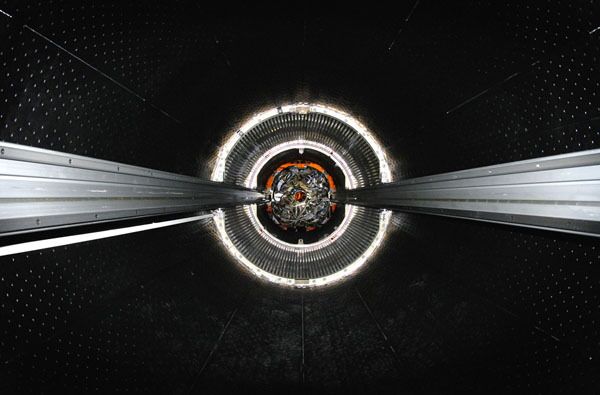Russia has made significant contributions to the international particle collider project and hopes it will boost the prestige of Russian scientists worldwide, a Russian physicist said on Tuesday.
Scientists at the Large Hadron Collider (LHC) in Switzerland on Tuesday collided protons at record power of 7 tera-electron volts (TeV), or 3.5 TeV per beam, moving a step closer to unraveling the mysteries of the universe.
"Russia is an equal partner in the LHC project. Its contribution to the project is about 7%. About 700 physicists and engineers participate in research," said Viktor Matveyev, academician-secretary of the department of physical sciences at the Russian Academy of Sciences.
He said that Russian companies have manufactured a wide range of equipment for the atom smasher. In particular, a Russian firm produced 80,000 crystals of lead tungstate for one of two large general-purpose particle physics detectors built on the collider.
"Russian scientists take part in all experiments on the collider," Matveyev said.
The scientist added that an active participation in this unique project has the same importance for boosting Russia's prestige in the world as winning a record number of medals at the Olympics.
The $5.6 billion international LHC project has involved more than 2,000 physicists from hundreds of universities and laboratories in 34 countries since 1984.
Russia joined the project in 1996, when Moscow signed an agreement with the European Organization for Nuclear Research (CERN) stipulating an annual investment of $6 million over 10 years.
The collider, located 100 meters under the French-Swiss border with a circumference of 27 km (17 miles), enables scientists to shoot subatomic particles round an accelerator ring at almost the speed of light, channeled by powerful fields produced by superconducting magnets.
In order to fire beams of protons round the vast underground circular device, the entire ring must be cooled by liquid helium to minus 271 degrees C, just two degrees above absolute zero.
By colliding particles in front of immensely powerful detectors, scientists hope to detect the Higgs boson, nicknamed the "God particle," which was hypothesized in the 1960s to explain how particles acquire mass. Discovering the particle could explain how matter appeared in the split-second after the Big Bang.
Experiments using the LHC were suspended in September 2008 shortly after a successful start, due to a malfunction of two superconducting magnets and a subsequent helium leak into the tunnel housing the device.
Work to repair and upgrade the collider after the breakdown cost almost $40 million and took more than a year. A system to protect it from such accidents, named the Quench Protection System, was installed, and the first beams were injected into the LHC on November 20 last year.
DUBNA (Moscow Region), March 30 (RIA Novosti)


